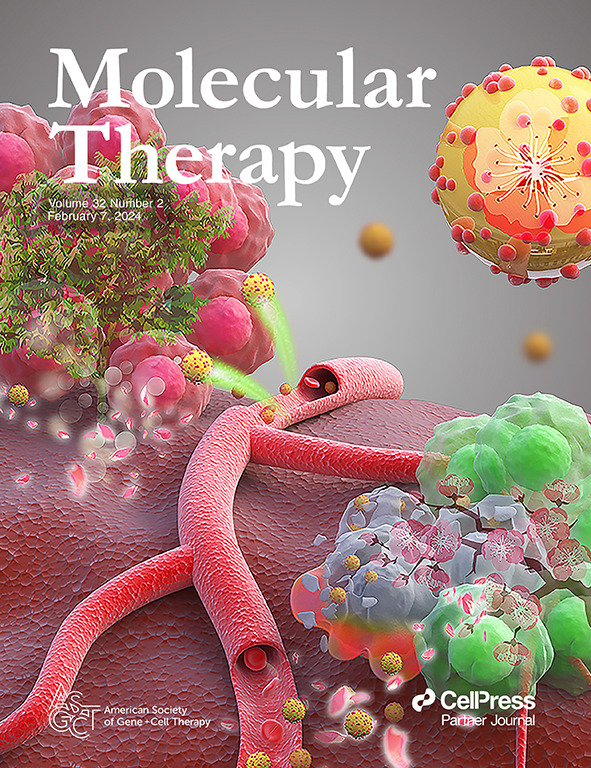Spatial Multi-Omics Reveals the Potential Involvement of SPP1+ Fibroblasts in Determining Metabolic Heterogeneity and Promoting Metastatic Growth of Colorectal Cancer Liver Metastasis.
IF 12.1
1区 医学
Q1 BIOTECHNOLOGY & APPLIED MICROBIOLOGY
引用次数: 0
Abstract
This study aims to investigate key microscopic regions involved in colorectal cancer liver metastasis (CRLM), focusing on the crucial role of cancer-associated fibroblasts (CAFs) in promoting tumor progression and providing molecular and metabolism-level insights for its diagnosis and treatment using multi-omics. We followed 12 fresh surgical samples from 2 untreated CRLM patients. Among these, 4 samples were used for spatial transcriptomics (ST), 4 for spatial metabolomics, and 4 for single-cell RNA sequencing (scRNA-seq). Additionally, 92 frozen tissue samples from 40 patients were collected. 7 patients were used for immunofluorescence and RT-qPCR, while 33 patients were used for untargeted metabolomics. ST revealed that the spatial regions of CRLM consists of 7 major components, with fibroblast-dominated regions being the most prominent. These regions are characterized by diverse cell-cell interactions and immunosuppressive, and tumor growth-promoting environments. scRNA-seq identified that SPP1+ fibroblasts interact with CD44+ tumor cells, as confirmed through immunofluorescence. Spatial metabolomics revealed suberic acid and tetraethylene glycol as specific metabolic components of this structure, which was further validated by untargeted metabolomics. In conclusion, a SPP1+fibroblast-rich spatial region with metabolic reprogramming capabilities and immunosuppressive properties was identified in CRLM, which potentially facilitates metastatic outgrowth through interactions with tumor cells.空间多组学揭示SPP1+成纤维细胞在决定结直肠癌肝转移代谢异质性和促进转移生长中的潜在参与。
本研究旨在探讨结肠直肠癌肝转移(CRLM)的关键微观区域,重点研究癌症相关成纤维细胞(CAFs)在促进肿瘤进展中的关键作用,并利用多组学技术为其诊断和治疗提供分子和代谢水平的见解。我们跟踪了2例未经治疗的CRLM患者的12例新鲜手术样本。其中4个样本用于空间转录组学(ST), 4个样本用于空间代谢组学(scRNA-seq), 4个样本用于单细胞RNA测序(scRNA-seq)。此外,还收集了40例患者的92份冷冻组织样本。7例患者采用免疫荧光和RT-qPCR, 33例患者采用非靶向代谢组学。ST显示,CRLM的空间区域由7个主要成分组成,以成纤维细胞为主的区域最为突出。这些区域的特点是不同的细胞-细胞相互作用和免疫抑制,肿瘤生长促进的环境。scRNA-seq通过免疫荧光证实,SPP1+成纤维细胞与CD44+肿瘤细胞相互作用。空间代谢组学显示亚亚硫酸和四甘醇是该结构的特异性代谢成分,非靶向代谢组学进一步验证了这一点。总之,在CRLM中发现了一个具有代谢重编程能力和免疫抑制特性的富含SPP1+成纤维细胞的空间区域,该区域可能通过与肿瘤细胞的相互作用促进转移性生长。
本文章由计算机程序翻译,如有差异,请以英文原文为准。
求助全文
约1分钟内获得全文
求助全文
来源期刊

Molecular Therapy
医学-生物工程与应用微生物
CiteScore
19.20
自引率
3.20%
发文量
357
审稿时长
3 months
期刊介绍:
Molecular Therapy is the leading journal for research in gene transfer, vector development, stem cell manipulation, and therapeutic interventions. It covers a broad spectrum of topics including genetic and acquired disease correction, vaccine development, pre-clinical validation, safety/efficacy studies, and clinical trials. With a focus on advancing genetics, medicine, and biotechnology, Molecular Therapy publishes peer-reviewed research, reviews, and commentaries to showcase the latest advancements in the field. With an impressive impact factor of 12.4 in 2022, it continues to attract top-tier contributions.
 求助内容:
求助内容: 应助结果提醒方式:
应助结果提醒方式:


